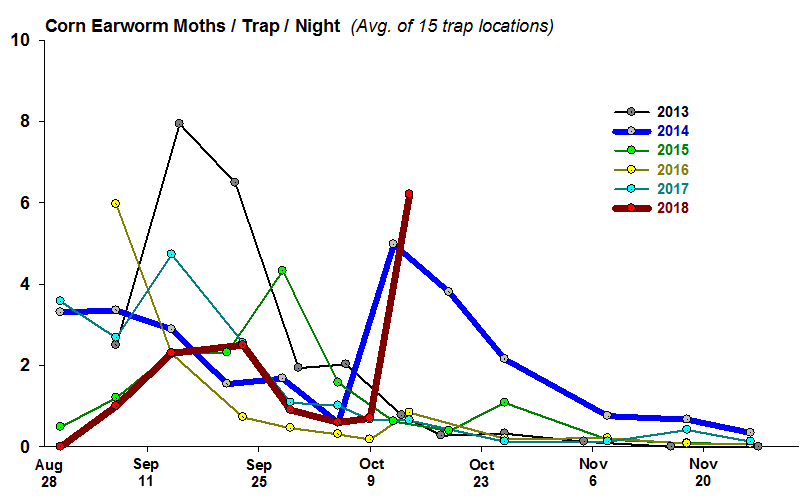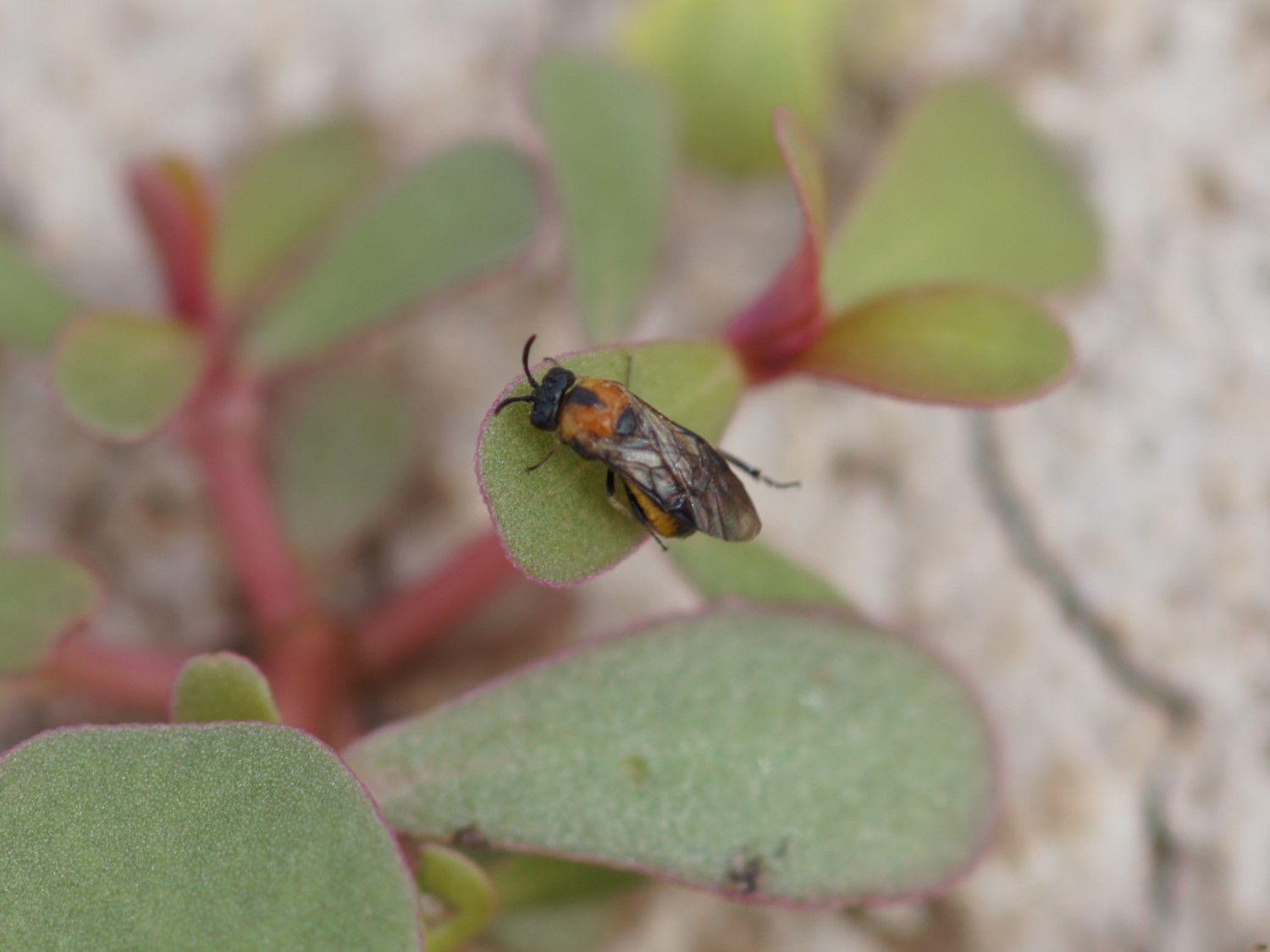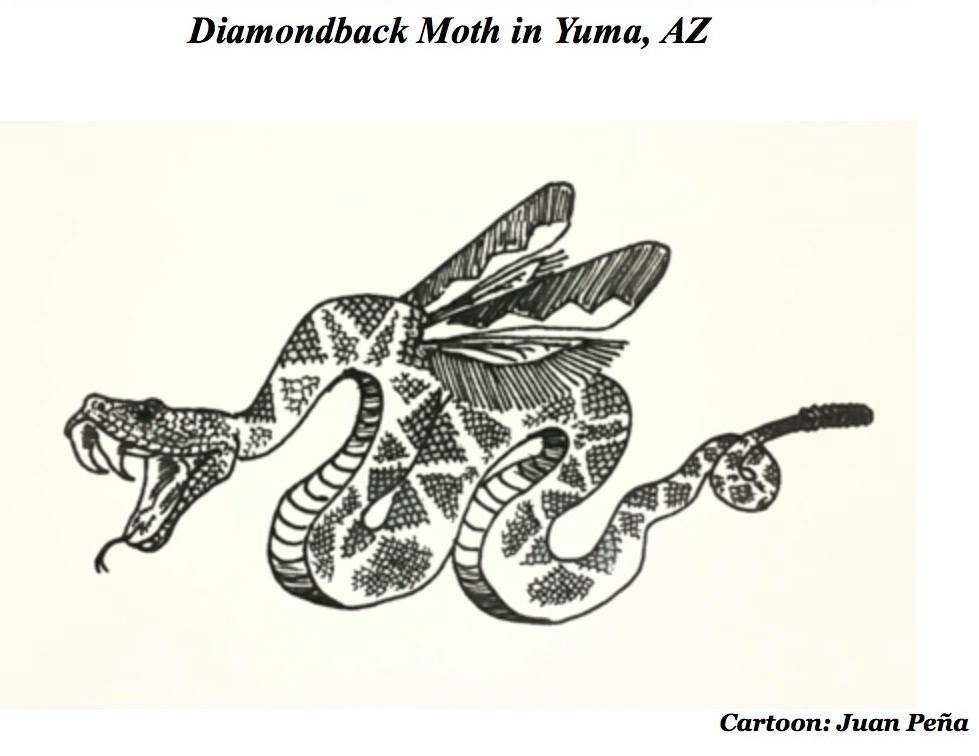
|
|
|
|

|
|||
|
|
|||
With head lettuce crops beginning to rosette and folding-in to form heads, it would be wise to keep a keen eye out for corn earworm (CEW). This year could be particularly important as pheromone trap catches this fall have been much higher than we’ve seen in recent years (see graph below and Areawide Trap Network). Although pheromone trap counts don’t always correlate to field infestations, the last time we saw significant fall larval populations in the field was in 2014. What’s scary is that moth counts this week are higher than what we saw in the fall of 2014. Furthermore, PCA’s have recently reported the presence of CEW larvae on lettuce in Dome Valley and Wellton. At the Yuma Ag Center we can find larvae on ~3% of pre-heading stage plants (that’s above threshold). CEW can be very damaging in early fall head lettuce crops where once head formation begins larvae will usually bore into the head almost immediately upon hatching. Corn earworm is much more likely to bore into lettuce heads than other Lepidoptera larvae, rendering the heads unmarketable. Larvae may enter the head from any point on the plants, but can often be found burrowing in from the top half of the head. If fields are not watched closely, infestations may not be noticed until the head is harvested. Once inside the head, it is virtually impossible to control the larvae with insecticides. Thus, pay careful attention for newly oviposited eggs (laid singly) on lettuce plants. If you are beginning to find eggs and suspect that CEW are active in the field when plants are beginning to head or cup over, you should treat as soon as possible. Moreover, during late October and early November it is probably a good idea to prophylactically apply a pyrethroid, methomyl or acephate when heads begin to form. The UA nominal threshold for CEW in head lettuce from the beginning of heading to harvest is 1-2 larvae / 100 plants (1-2%). Repeated insecticide treatments may be required to maintain low population levels if heavy pressure is sustained near harvest. Most contact insecticides recommended for Lep larvae are active against CEW. Lab bioassays have shown that CEW larval mortality is most rapid when exposed to Lannate, 0.5 lb (>90% mortality in 1 hr after exposure) and pyrethroids, high rates (>90% mortality in 3 hrs), followed by Radiant, 5 oz (>90% mortality in 6 hrs). By 24 hrs, mortality was 100% for all the treatments. For more information on CEW management and control recommendations see Corn Earworm Management on Desert Produce and the 2018 Lep Control Chart. | |||
| Back | |||
|
For questions or comments on any of the topics please contact Marco Pena at the Yuma Agricultural Center.
|
|||
|
Home |
Cotton | Veggies |
Forages | Grains
| Citrus |
Crop x Crop Insects | Diseases| Weeds | Pesticides | Economics | News | Weather | Research | Photos | Contacts | General Info. Copyright © 2001 University of Arizona, College of Agriculture and Life Sciences Webmaster: Al Fournier (acis@ag.arizona.edu) |
|||



